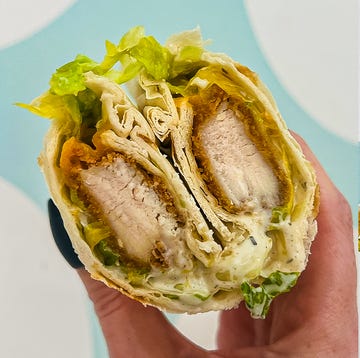UPDATE: November 10, 2015 at 12 p.m.
In a slightly surprising twist, Chipotle could reopen the 43 restaurants it closed on October 31 in Washington and Oregon as early as Wednesday. Reuters reports that, after health officials reported no trace of E. coli in food samples at the chain, the restaurants will only be required to sanitize each premises, throw out all current food items, and pre-test high-risk ingredients like lettuce and peppers on a continuous basis as it brings them in. Each location also must have an on-site inspection conducted by a county health official.
However there is a slight catch: Public health officials in Washington state and from the U.S. Food and Drug Administration (FDA) have still not figured out the cause of this food poisoning outbreak, which sickened 43 people and hospitalized 14. The E. coli bacteria are associated with animal waste and can be spread through contaminated water or improperly cured compost. "Finding the source of the outbreak is often like finding a needle in the haystack," said Jonathan Modie, a spokesman for the Oregon Health Authority.
Meanwhile, the burrito brand is stressing its scot-free evaluation. "In addition to the testing done by health departments and the FDA, we have received results from nearly 900 test samples that include food, surfaces in our restaurants, and restaurant equipment. None of them have shown E. coli. All have been negative. We are, of course, sharing those results with investigators," Chris Arnold, Chipotle's PR Director, told CTV News.
ORIGINAL POST: November 9, 2015 at 6:11 p.m.
After Chipotle's large-scale E. coli outbreak last week, the company declared that it was making "aggressive moves" to find the source, such as scrubbing restaurants from top to bottom and hiring two food-safety consulting firms. Meanwhile, the U.S. Centers for Disease Control (CDC) has gotten involved, conducting its own investigation to both solve the mystery and potentially link the outbreak to other cases.
With growing numbers—as of Tuesday eight locations have been affected, 14 people are hospitalized, and 25 more cases are waiting for test results—the CDC isn't wasting any time. Instead, it has jumpstarted DNA tests to essentially track down a family tree or "fingerprint" for the specific type of bacteria and microbes involved with this e.coli outbreak.
Once the strain is identified, health officials can identify which food products were affected. From there, they aim to trace those ingredients back to their source to find out where and when they became contaminated—potentially as far back as the farm where it was produced.
However, even with a high-tech approach, the investigation also entails tried-and-true techniques like interviews with those who've gotten sick—and even those who haven't—to rule out ingredients that could have started it all. For example, health officials are using potential clues like one hospitalized victim, an 8-year-old who is a vegetarian and could signal that fresh produce is to blame and not beef, chicken, or pork.
If you're still wary of eating at the burrito chain, we understand. But remember that the outbreak has been contained to just two states, Washington and Oregon. Plus, experts point out that multiple restaurants are unlikely to have all served undercooked meats at the same time. Your outpost is probably good to go, but we wouldn't blame you for making your own burritos at home—especially because Qdoba is spreading typhoid fever.
Follow Delish on Instagram.














